#yucca valley film festival
Explore tagged Tumblr posts
Text
Work hard. Play hard. Win a prize. Throw a party!
We hosted the "X AE A-12" festival premiere party at The Desert Dog House in Joshua Tree.
The Dog House was our main location for the film. This is where "X" lives in the film.
We could not have found a better location for this particular story. And it was the Perfect location for our premiere party!
"Equal parts luxury retreat and playful secret society" - MAXIM Magazine (Sept/Oct 2023)
You can check it out here -> https://www.desertdoghouse.com/
#xaea12movie#yucca valley film festival#the desert dog house#red carpet#premiere party#film festivals#joshua tree#Tesla#roadster
0 notes
Text
Spike makes an appearance on the red carpet at the Yucca Valley Film Festival, happening this weekend.
#YVFF #Spike #CMC #CMCF #YuccaValleyFilmFestival





0 notes
Text
Experience the Vibrancy: Annual Festivals and Events in Yucca Valley, California.
Yucca Valley, California, isn't just known for its breathtaking desert landscapes and thriving real estate market; it's also a hub of cultural activity, boasting a diverse array of annual festivals and events. From celebrating local art and music to embracing the unique charm of desert living, these gatherings offer residents and visitors alike an opportunity to come together and experience the vibrant spirit of Yucca Valley, California.
1. Grubstake Days:One of the most anticipated events in Yucca Valley is Grubstake Days, a celebration of the town's rich history and pioneering spirit. Held annually in May, this multi-day festival features a lively parade, carnival rides, live music, and a variety of vendor booths offering delicious food and handmade crafts. Grubstake Days is a beloved tradition that brings the community together to honor its heritage and foster a sense of camaraderie.
2. Joshua Tree Music Festival:Music enthusiasts from near and far flock to Yucca Valley each spring for the Joshua Tree Music Festival. This dynamic event showcases an eclectic lineup of musicians spanning various genres, from indie rock and folk to world music and electronic beats. In addition to live performances, attendees can participate in yoga classes, workshops, and interactive art installations, creating a vibrant atmosphere of creativity and exploration.
3. Art in Public Places:Yucca Valley's commitment to fostering artistic expression is evident through its Art in Public Places program. Throughout the year, residents and visitors can enjoy a self-guided tour of outdoor sculptures and murals scattered throughout the town. These captivating works of art not only beautify public spaces but also serve as a testament to Yucca Valley's thriving arts community and commitment to cultural enrichment.
4. Yucca Valley Film Festival:Film aficionados rejoice during the annual Yucca Valley Film Festival, a celebration of independent cinema and storytelling. This multi-day event showcases a diverse selection of feature films, documentaries, and shorts, highlighting both emerging talent and established filmmakers. Attendees have the opportunity to engage with filmmakers through Q&A sessions and panel discussions, fostering a deeper appreciation for the art of filmmaking and its impact on society.
5. Star Parties:As night falls over the desert sky, astronomy enthusiasts gather for star parties hosted by local observatories and astronomy clubs. These gatherings offer participants a chance to peer through telescopes and explore the wonders of the cosmos, guided by knowledgeable astronomers who share their passion for the night sky. Whether observing distant galaxies or marveling at the beauty of the moon, star parties provide a memorable experience for stargazers of all ages.
Conclusion:From celebrating the town's history and cultural heritage to embracing the wonders of the cosmos, Yucca Valley's annual festivals and events offer something for everyone to enjoy. Whether you're a music lover, art enthusiast, or simply curious about desert living, these gatherings provide a unique opportunity to connect with the community and experience the vibrant spirit of Yucca Valley, California.
1 note
·
View note
Video
vimeo
Winter's Blight from Claire Campbell on Vimeo.
In a clearing amongst a forest of pines lives a lonely old man who struggles to keep himself warm, though help comes from an unexpected friend.
Winter's Blight is a stop motion short film made in Dunedin, New Zealand.
Behind the Scenes - vimeo.com/167396703
Written, Directed and Animated by Claire Campbell
Produced by Jon Wilson - Shine on Films - shineonfilms.co.nz
Composer - Hanan Townshend - hanantownshend.com Sound Design - Hugh Harlow Voice Actor - Mark Neilson
Director of Photography - Jon Wilson Production Design - Claire Campbell Set and props build - Claire Campbell, Autumn Eyles, Liam Dakin, Josh Hunter, John Wilson, Nathan Forbes
Funded by - Short film Otago - sfo.nz
Special thanks to - Otago Polytechnic, Dunedin City Council, NHNZ & everyone else who supported the making of this film.
Awards: Winner Best Short Animation - Melbourne Film Festival 2021 Winner Best Stop Motion - Open World Animation Festival 2020 Winner Best Film Stop Motion, Best Story, Best Design - Animation Studio Festival 2019 Winner Festivals Pick - Yucca Valley Film Festival 2019 Winner Best Visual Design - Animation Feedback Festival 2020 2nd Place Award - Thessaloniki Animation Festival 2019
5 notes
·
View notes
Text
Is it a coincidence that any day one of my faves is around the palm desert area my mom happens to be working there?
#she gets placed in a different office everyday#yesterday liev was in yucca valley literally 20 min from my mom#and last year when downey visited palm springs for the film festival she was working there that day#i mean 2015 whatever#it's a sign
4 notes
·
View notes
Photo

Back in the spring, I planted a handful of script competition seedlings with my short, Doctor’s Orders. And as a first-timer, I’d say the fall has yielded a good harvest for me. This dramedy takes a glimpse into the life of grieving surgeon Irene Reynoso. Following her father’s death, she grapples with loss and reconnection as she approaches the day of a delicate operation to save a child’s life. Def appreciate the nods of recognition that Doc Reynoso received from the DTLA Film Festival, Scriptapalooza, and the Yucca Valley Film Festival. Gonna make a getaway out of YVFF this coming weekend. Looking forward to joining the writers’ roundtable then!
0 notes
Video
vimeo
Winter's Blight from Claire Campbell on Vimeo.
In a clearing amongst a forest of pines lives a lonely old man who struggles to keep himself warm, though help comes from an unexpected friend.
Winter's Blight is a stop motion short film made in Dunedin, New Zealand.
Behind the Scenes - vimeo.com/167396703
Written, Directed and Animated by Claire Campbell
Produced by Jon Wilson - Shine on Films - shineonfilms.co.nz
Composer - Hanan Townshend - hanantownshend.com Sound Design - Hugh Harlow Voice Actor - Mark Neilson
Director of Photography - Jon Wilson Production Design - Claire Campbell Set and props build - Claire Campbell, Autumn Eyles, Liam Dakin, Josh Hunter, Jon Wilson, Nathan Forbes
Funded by - Short film Otago - sfo.nz
Special thanks to - Otago Polytechnic, Dunedin City Council, NHNZ & everyone else who supported the making of this film.
Awards: Winner Best Short Animation - Melbourne Film Festival 2021 Winner Best Stop Motion - Open World Animation Festival 2020 Winner Best Film Stop Motion, Best Story, Best Design - Animation Studio Festival 2019 Winner Festivals Pick - Yucca Valley Film Festival 2019 Winner Best Visual Design - Animation Feedback Festival 2020 2nd Place Award - Thessaloniki Animation Festival 2019
0 notes
Video
vimeo
In a clearing amongst a forest of pines lives a lonely old man who struggles to keep himself warm, though help comes from an unexpected friend. Winter's Blight is a stop motion short film made in Dunedin, New Zealand. Behind the Scenes - https://bit.ly/3jpmSYA Written, Directed and Animated by Claire Campbell Produced by Jon Wilson - Shine on Films - https://bit.ly/2TT4vSX Composer - Hanan Townshend - https://bit.ly/3ik9ghP Sound Design - Hugh Harlow Voice Actor - Mark Neilson Director of Photography - Jon Wilson Production Design - Claire Campbell Set and props build - Claire Campbell, Autumn Eyles, Liam Dakin, Josh Hunter, John Wilson, Nathan Forbes Funded by - Short film Otago - https://bit.ly/3CcoYDP Special thanks to - Otago Polytechnic, Dunedin City Council, NHNZ & everyone else who supported the making of this film. Awards: Winner Best Short Animation - Melbourne Film Festival 2021 Winner Best Stop Motion - Open World Animation Festival 2020 Winner Best Film Stop Motion, Best Story, Best Design - Animation Studio Festival 2019 Winner Festivals Pick - Yucca Valley Film Festival 2019 Winner Best Visual Design - Animation Feedback Festival 2020 2nd Place Award - Thessaloniki Animation Festival 2019
0 notes
Photo

Silver Streak #nightmoves #composition #carnival #signage #oldschool #rides #festival #colors #light #ambient #nostalgia #existingplaces #lighting #temporary #spaces #magic #fair #magic #motion #inspiration #design #energy #photography #film #composition #story #places #art #cinematic #moments (at Yucca Valley, California)
#existingplaces#story#light#design#spaces#lighting#photography#motion#ambient#magic#temporary#oldschool#moments#cinematic#carnival#inspiration#fair#nightmoves#art#festival#energy#film#rides#composition#colors#signage#nostalgia#places
1 note
·
View note
Text

CMC’s EEO Committee invites you to join us today for n International Woman’s Day, March 8, 2023 for LUNAFEST®, the film festival by women about women.
The 2023 season of LUNAFEST® features seven short films with a total running time of 90 minutes. We’re proud to amplify the inspiring short films by this year’s selection of women and gender nonconforming directors. Our featured filmmakers are from all walks of life and range from poets to conservationists, activists, and educators. These stories remind us that when we come together, we all move forward.
We invite you to #PlayAPart. There will be two screenings in the Christine Proudfoot Student Activity Center in 300 Quad today. Complimentary lunch and films from 11 am – 1 pm and another showing 6 - 8 pm with popcorn and Luna Bars compliments of Soroptomist International of Yucca Valley. Both events are FREE and open to the public. www.lunafest.org #lunafest #forwomenbywomen #coppermountaincollege
0 notes
Text
LA / Hoofprint

Left: Shanna Waddell, detail from SONY (oil, sand, plaster, paper, spray paint, cigarettes, and flowers on canvas), 2018. Right: Laura Letinsky, untitled image from the series Time’s Assignation, and Other Polaroids 1997-2007.
Hoofprint March 14 – April 5, 2020 Opening Reception: Friday, March 14, 7-10 pm
LOS ANGELES, CA – Tiger Strikes Asteroid Los Angeles is pleased to present Hoofprint, a group show of works in painting, photography, sculpture, and film, explores the meaning of presence through its afterimage, the trace. Emerging with the latency of a heavy heel, the pressure of a knee, a smudge, a wrapper, or a rind, traces are among the most unselfconscious and revealing forms of marks. Tied together through the Japanese concept of mono-no-aware—roughly, sensitivity to ephemera—these works, by artists Laura Letinsky, Shanna Waddell, Zach Trow, Theresa Sterner, and J. Makary, share an attunement to what is left behind.
Letinsky’s iconic images of dining tables, kitchen counters, and emptied-out apartments register evidence of lives lived—meals cooked and eaten, candles lit and extinguished, vows made, homes abandoned. Her photographs, at times celebratory, but more often wistful and elegiac, are composed in ways that suggest uncanny interference. Collaborating sculptors Trow and Sterner likewise take on the ephemerality of cast-offs, like nectarine rinds and shopping bags, giving them a ghostly permanence in their frozen, sculptural forms. Working with traces left by people in public spaces, Trow and Sterner dialogue with the historical work of Isamu Noguchi, artist and designer of civic gardens and plazas, and elevate the inconsequential and the overlooked with a patient and attentive formalism.
Drawing on Southern California beach culture, painter Waddell uses the traces of sun-worshipping bodies on towels to leave an enduring, dark record of the obsessions, addictions, and frivolities that play out on the sand. Her works from this series strike at the heart of our ambivalence to nature—our own, and the wild, deep reaches of the Pacific creeping at the shore. In Makary’s film assemblage for this show, the artist shares her discovery of the burned books of Irish author Brian Moore, pages of which were found blowing on the beach in front of his former home after the catastrophic Woolsey Fire in November 2018. Makary will also collaborate with Sterner and Trow to document, on 16mm film, the performative activation of their sculptural piece commissioned for Hoofprint.
A screening of films programmed by J. Makary and Eli Horwatt will take place in conjunction with the exhibition.
A professor at the University of Chicago since 1994, Laura Letinsky earned her BFA in photography and ceramics from the University of Manitoba, Winnipeg, Canada, where she grew up. In 1991, she received her MFA in photography from Yale University’s School of Art. Recent exhibitions include To Want For Nothing, Yancey Richardson Gallery, New York, and Document, Chicago; PHotoESPAÑA, Madrid; Neither Natural nor Necessary, Mumbai Photography Festival, Mumbai, India; Producing Subjects, MIT, Cambridge, MA; The Telephone Game, Basel Design; IIl Form and Void Full, the Photographers Gallery, London; and Laura Letinsky: Still Life, Denver Art Museum, CO. Previous shows include the Getty Museum, Los Angeles; the Canadian Museum of Contemporary Photography; the Museum of Modern Art, New York, NY; Casino Luxembourg; and the Renaissance Society, Chicago. Her work is in collections at the Art Institute of Chicago; Hermes Collection, Paris; the Microsoft Art Collection, Seattle, WA; the John Paul Getty Museum, Los Angeles; the Musée des beaux-arts, Montreal; the Museum of Fine Art, Houston; and the San Francisco Museum of Modern Art. She is represented by Yancey Richardson Gallery, New York, and she shows with Galerie m Bochum in Bochum, Germany. Her grants and awards include the Canada Council International Residency; Kunstlerhaus Bethanien, Berlin; The Canada Council Project Grants; the Anonymous Was a Woman Award; and the John Simon Guggenheim Fellowship. She has published eight books of her photography.
With an experimental spirit, educator and painter Shanna Waddell looks to visionaries and aspirational communities as research for her artistic practice. Waddell’s pursuit of beauty and utopic possibilities has resulted in bodies of work that memorialize fallen public figures and religious cults and their leaders, such as Heaven’s Gate, Satan, and superstars Kurt Cobain and River Phoenix. In her current work, Waddell looks to female forms to embody utopic visions of what art making can be within diverse artistic practices. Her solo and two-person exhibitions include Thomas Erben Gallery, New York; Galerie La Croix at Art Center College of Design, in Pasadena, CA; Ms. Barbers, Los Angeles; and the University of the Arts, Philadelphia. Noted group exhibitions include Torrance Art Museum, Torrance, CA; Itd los angeles; and QUEENS LA. Waddell holds an MFA from the Tyler School of Art in Philadelphia.
Theresa Sterner and Zach Trow are sculptors living in Los Angeles who have been working collaboratively since 2016. Together they have been artists-in-residence at Coast Time, in Lincoln City, Oregon; the Cooper Union in New York; and the Yucca Valley Material Lab. They have given public lectures at the Cooper Union in New York and Central Park Gallery in Los Angeles, and have exhibited at the Brand Library and Art Center in Glendale, CA; the SPRING/BREAK Art Show in Los Angeles; and the Torrance Art Museum in Torrance, CA, a solo show for which they received a Foundation for Contemporary Art Emergency Grant in 2019. Sterner received a BFA in sculpture and metals/jewelry from the University of Oregon in 2009 and an MFA in sculpture from Tyler School of Art in Philadelphia in 2014. Her work has been exhibited at A.I.R. Gallery and Present Company, both in New York; the Every Woman Biennial, Other Places Art Fair, GAIT, and Tiger Strikes Asteroid in Los Angeles; the Woodmere Art Museum in Philadelphia; SOMA in Mexico City; and venues in New York, Los Angeles, Philadelphia, and Portland, OR. She has had residencies at Ox-Bow School of Art in Saugatuck, MI; PLAYA in Summerlake, OR; and the Stripa Historic Iron Ore Mine in Bergslagen, Sweden. Trow earned dual degrees in Japanese and sculpture at the University of Oregon in 2009 and his MFA in Sculpture at Hunter College in 2014. In 2013, he completed a study-abroad program at the Universität der Künste Berlin, Germany, and mounted a two-person exhibition at Greusslich Contemporary. In 2014, Trow was awarded a full scholarship to SOMA Summer Mexico City and exhibited at Bikini Wax during his stay. In 2015, he was awarded the Fountainhead Teaching Fellowship at Virginia Commonwealth University in Sculpture, and in 2017 he was a fellowship recipient at Lighthouse Works on Fishers Island, NY. His solo exhibitions include Reynolds Gallery in Richmond, VA, and Doppler Gallery in Portland, OR. He has participated in exhibitions in Philadelphia, New York, and Los Angeles.
J. Makary’s films have screened at the Athens International Film & Video Festival, the ICA Philadelphia, the Slought Foundation in Philadelphia, Mana Contemporary in Chicago and Jersey City, Satellite Miami, SPACES Cleveland, the SPRING/BREAK Art Show in Los Angeles, Human Resources LA, and the American Dance Festival, among other places. At the heart of her practice is an approach she calls “feral editing,” a filmmaking style that weaves choreographic impulses into narrative and documentary film practices with a bit of wildness and play. Originally trained as a writer and editor at the Medill School of Journalism at Northwestern University, she studied fine art at the University of Pennsylvania and earned an MFA in film at Temple University in 2013. Makary was named a Pew Fellow in the Arts in 2013 and attended the Skowhegan School of Painting and Sculpture in 2014. She has been an artist-in-residence at RAIR Philly, the 18th Street Arts Center in Santa Monica, CA, and the Philadelphia Society for the Preservation of Landmarks. She is an associate editor for feminist film journal Another Gaze and is a member of Tiger Strikes Asteroid Los Angeles.
0 notes
Text
Layak Jadi Destinasi Liburan, Ini 3 Spot Tercantik di California
Forbes - California merupakan salah satu bagian negara terbesar yang ada di Amerika Serikat. Negara yang identik dengan pesona Golden Gate Bridge yang biasanya ditampilkan dalam film ini menyedot perhatian publik. Layak menjadi destinasi liburanmu selanjutnya, inilah 3 spot tercantik yang ada di California. Ace Hotel

©acehotel.com Ace Hotel bertempat di gedung United Artists yang bersejarah. Bangunan dan interiornya yang eksotis membuat setiap spot dari hotel ini begitu memukau. Untuk sampai ke hotel ini, kamu bisa berjalan kaki selama 12 menit dari The Grammy Museum, 15 menit berjalan dari Staples center dan 1,8 km dari Museum of Contemporary Art.

©acehotel.com Pilihan kamarnya memiliki gaya industri unik yang mengedepankan nuansa private. Terdapat private terrace, private wet bar, fully stocked mini bar, beberapa termasuk gitar akustik, dapur kecil dan ruang tamu pribadi yang membuat liburanmu makin menyenangkan. Ada juga pusat kebugaran yang buka 24 jam, toko yang menjual vinyl vintage dan pakaian. Jangan lewatkan kesempatan bersantai di infinity pool yang ada di puncak gedung serta teater megah bergaya Spanyol yang menakjubkan. Caravan Outpost

©caravanoutpost Pengalaman liburan ke California bakalan terasa beda jika kamu menyempatkan datang ke Caravan Outpost. Yup, pengalaman menginap di caravan yang berada di tengah oasis Ojai. Rasakan sensasi menikmati sejuknya udara pagi dan menjadikan langit sebagai atap ketika malam akan menjadi pengalaman yang tidak terlupakan.

©caravanoutpost Deretan kegiatan dan events yang diadakan di sana juga nggak kalah seru. Mulai dari fire side screening beralaskan pasir, live music setiap bulan, campfire cooking, bike path, tempat menginap di alam terbuka yang private serta toko buku yang bisa kamu temui saat bersepeda. Nuansa alam yang tenang dan indah ini akan menciptakan memori yang berkesan banget. Joshua Tree

©instagram/joshuatreenps Mendengar kata Joshua Tree National Park, pastinya kamu langsung ingat dengan tempat penyelenggaraan festival musik Coachella 2018 lalu. Meski hanya diadakan di Coachella Valley yang terletak di Gurun Colorado, namun foto-foto para seleb yang instagramablemembuat siapa saja ingin memiliki hal yang serupa. Joshua Tree National Park menyimpan berbagai spot terbaik yang layak untuk dijadikan destinasi liburan. Terletak di Gurun Mojave California, gurun ini terkenal dengan pepohonan berbentuk unik (pohon jenis yucca), museum outdoor hingga pemandangan bintang yang bikin takjub. Bagi kamu yang menyukai alam terbuka, deretan kegiatan seperti panjat tebing, berkemah hingga hiking menjadi sangat menantang. Read the full article
0 notes
Text
Don’t Call It Tex-Mex – The New York Times
HOUSTON — This city’s Second Ward is full of temptations for Adán Medrano, a writer and chef who lives just a few miles southeast.
The Mexican-American neighborhood is home to the perfect flaky tortillas at Doña María Mexican Cafe, scratch-made in flour or corn, and ready to be folded around eggs with the fine threads of dried beef called machacado. It has the off-menu roasted tamales at the Original Alamo Tamales, with blackened husks and caramelized edges of masa and meat. And there’s Taqueria Chabelita, where the owner, Isabel Henriquez Hernandez, makes pinto beans whose smoky intensity comes not from pork fat, but from a slow char in a hot pan.
For Mr. Medrano, who grew up in San Antonio with generations of relatives on both sides of the Rio Grande, this is all his comfort food, his culinary heritage, his comida casera, or Mexican home cooking.
Just don’t call it Tex-Mex, he said. He prefers to describe it as Texas Mexican, which is also how he describes himself.
Texas Mexican is the indigenous cooking of South Texas, according to Mr. Medrano, 71, whose second cookbook, “Don’t Count the Tortillas: The Art of Texas Mexican Cooking,” will be published in June by Texas Tech University Press. It’s the food that’s been made by families like his on this land since before the Rio Grande marked a border, when Texas was a part of Mexico, and long before then.
Don’t get him wrong: Tex-Mex is a cuisine that should be respected and celebrated, he said. It’s just that Tex-Mex standards like queso and combo fajitas piled high with chicken and shrimp don’t speak of home to those whose Texas roots go back some 12,000 years.
“That’s not our food,” said Mr. Medrano, who has spent the better part of a decade defining his cuisine, inspiring a growing number of Texas Mexicans in the process. “We don’t eat like that.”
You can find Texas Mexican here at Mr. Medrano’s Houston go-tos, and at decades-old San Antonio West Side lunch spots like Old Danny’s Cocina, or even newer favorites like El Puesto No. 2 down the street. It’s at Maria’s Restaurant in downtown McAllen and at Cafe Amiga in Brownsville, both run by granddaughters of their founders.
It is dishes like chicken poached with striped green squash and corn, the tomato-noodle soup called fideo, and gulf shrimp and cactus stewed in a mix of dried red chiles. It’s the simple ground beef picadillo or the beef-and-potato stew called carne guisada, both subtly seasoned with a pounded paste of black peppercorn, garlic and cumin, which Mr. Medrano describes as the Texas Mexican version of the Cajun holy trinity.
It is what Juan Hernandez, of Doña María Mexican Cafe, has always described as “mama-style cooking”— the mama in this case being his wife, Anna Hernandez, who grew up a block away from the restaurant and is a co-owner. Mr. Hernandez would never call the food she makes Tex-Mex; in fact, it inspired Tex-Mex.
That began in the early 1900s, when local Mexican-American home cooking was first adapted in restaurants run “by Anglos for Anglos,” Mr. Medrano said. In the 1970s, writers started referring to that hybridized cuisine as Tex-Mex: refried beans as smooth as pancake batter; chili made with powdered spices and stock, instead of the carne con chiles based on whole dried red chiles; fajitas with anything other than the skirt steak that gave the dish its name; and extra cheese on everything.
The idea of distinguishing Texas Mexican from Tex-Mex came to him after he enrolled in the Culinary Institute of America program in San Antonio in 2010, after careers in producing and writing for television, and awarding foundation grants to nonprofit arts and education projects. Mr. Medrano, who also founded San Antonio’s annual Latino film festival in 1977, originally took the classes for fun, he said, but they led him to an epiphany: After decades in the shadows, his food needed not just a champion, but a name.
Mr. Medrano didn’t want to use the word Tejano, because it is sometimes used to highlight Spanish colonial ancestry rather than native heritage, and because spelling Texas with a J instead of an X is a European practice.
He came up with a better term after learning about the distinct regional cuisines of Mexico, realizing that he had essentially grown up with one of his own. “You have Oaxacan Mexican, you have Jaliscan Mexican,” Mr. Medrano said. “Why not Texas Mexican?”
His initial research on the history of this food became his first cookbook, “Truly Texas Mexican: A Native Culinary Heritage in Recipes,” published in 2014.
Since then, Mr. Medrano has traveled the region, cooking, lecturing at schools and museums, and gathering knowledge from chefs, anthropologists and home cooks, many of whom are quoted in “Don’t Count the Tortillas.” (This summer he will even make carne guisada tacos at a Fourth of July celebration in Moscow, at the residence of the United States ambassador to Russia.)
Mr. Medrano is also the executive producer, writer and host of a forthcoming bilingual documentary, “The Roots of Texas Mexican Food,” slated for release this fall. (He is pitching it to TV providers in the United States and Latin America.) The film focuses on Texas’ archaeological and historical sites, and on the women who have been the primary architects of the cuisine.
His work has been revelatory for restaurateurs like Sylvia Casares, a well-known Houston chef who operates Sylvia’s Enchilada Kitchen. “I had been searching for 20 years for how to describe my food,” said Ms. Casares, who is originally from Brownsville, at the state’s southeastern edge.
Ms. Casares met Mr. Medrano after he recommended her restaurant to a Houston reporter as a place to taste hallmarks of the cuisine, especially her enchiladas. Her crew makes hundreds a day the Texas Mexican way, each tortilla bathed in chile sauce and softened in hot oil before being rolled around its filling.
And what about the blanket of cheese on top? “There’s a little on there for looks,” Ms. Casares said.
Ms. Casares said Mr. Medrano’s work corrects both a lack of vocabulary and a lack of knowledge about history, even for some Mexican-Americans. “The problem with most people is they can’t get their heads around Texas’ indigenous foods,” she said.
Like many Mexican-American restaurateurs, she puts both Tex-Mex and Texas Mexican items on her menu. (Some dishes can overlap, or fall somewhere in between.) Most of her customers assume those that appear more traditionally Mexican were imported.
Yet these are not “south-of-the-border” creations, said Mr. Medrano: “Texas Mexican didn’t cross the border, the border crossed it.”
Until the Mexican-American War ended in 1848, much of southern Texas was Mexico, and for centuries before that part of the Viceroyalty of New Spain. That’s why, to Mr. Medrano, the heart of Texas Mexican culture is an area that includes southern Texas — the Rio Grande Valley, Corpus Christi and greater San Antonio and Houston — but also part of the northern Mexican states of Chihuahua, Coahuila, Nuevo León and Tamaulipas.
Those lie on the other side of the Rio Grande, but they share the same terroir, which includes mesquite and pecan trees; thickets of yucca and prickly pear cactus; staples like squash, beans, potatoes, chiles and corn; and seafood from the river and the Gulf of Mexico. It’s a subtropical zone that also supported thousands of head of cattle that followed the arrival of the Spanish in the 16th century.
In his research, Mr. Medrano was elated to find scholars who had occasionally used the term Texas Mexican, or had interviewed others who did. One of those was Mario Montaño, an anthropologist at Colorado College in Colorado Springs, whose focus is on food near the border. (His thesis was on barbacoa de cabeza, a cow’s head traditionally slow-cooked in a pit with hot stones, which Mr. Medrano’s family recently prepared on camera for his documentary.)
When Mr. Montaño grew up along the river in Eagle Pass, Tex., the water “was not a cultural separation,” he said.
Mr. Montaño describes this area’s cooking as influenced by centuries of mixing influences from trade, colonization and migration from Europe, the Middle East and Africa, as well as by Mexicans living in southern regions moving north.
Yet Texas Mexican food is rooted in the cooking of the nomadic Indigenous groups that moved around both sides of the river for centuries before the Spanish arrived. Many of those peoples — who are now collectively known as Tap Pilam Coahuiltecan Nation — moved into the Roman Catholic missions founded in San Antonio in the 1700s.
“What was here has given birth” to what Texans eat today, said Mr. Vasquez, noting that his ancestors were the ones doing the first hot-stone-and-pit cooking, often with unwanted cuts of meat like the cow heads left to them by Spanish.
The park has just converted 50 acres to farmland, which Mr. Vasquez hopes to help plant with native species, many of which are highlighted in Mr. Medrano’s new book. (It also includes a recipe from Mr. Vasquez’s mother for bison with blackberries and pecans, along with family recipes from the Texas artist César Martínez and the El Paso-born chef Rico Torres, of the modern Mexican restaurant Mixtli in San Antonio.)
This rich and living history is the reason San Antonio was awarded the rare City of Gastronomy designation in 2017 by Unesco. The city tapped Mr. Medrano to help create its application.
The recognition is a remarkable turnabout. The missions, after all, are only a few miles south of the plaza where Texas Mexican women were blocked from selling carne con chile from open-air stands in the early 20th century, while the dish itself was co-opted into chili. This is also where Otis Farnsworth, a Chicago transplant, opened his highly successful Original Mexican Restaurant, one of the first places serving what would become known as Tex-Mex.
Today, Farnsworth’s restaurant might be called out for cultural appropriation, or what Mr. Medrano calls “cultural poaching.” And Mr. Medrano does get angry at the lack of respect for his culture, the many ways in which Mexican-Americans have been wronged throughout history.
But he is generally driven by love for their cuisine, which delights him every time he sees a tortilla puff on a griddle, or catches the mingled scent of black pepper and cumin.
“We need to share the beauty of the food,” Mr. Medrano said, “and if we do, the world will be more beautiful.”
Sahred From Source link Travel
from WordPress http://bit.ly/2UPVA3W via IFTTT
0 notes
Text
Red Carpet. Red Eyes.
A great end to our film festival premiere weekend!
#xaea12movie #yuccavalleyfilmfestival #desertdoghouse
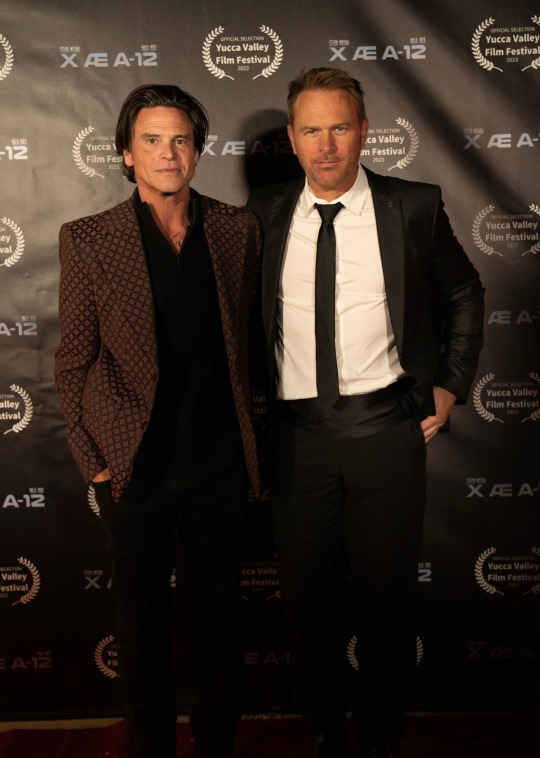
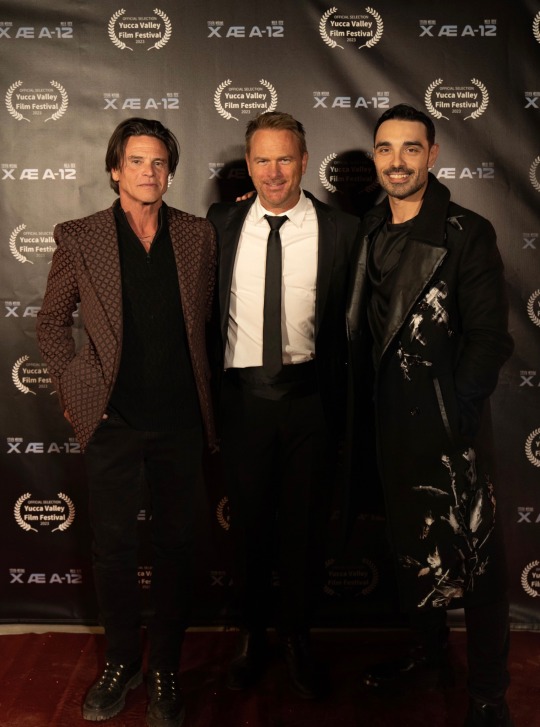
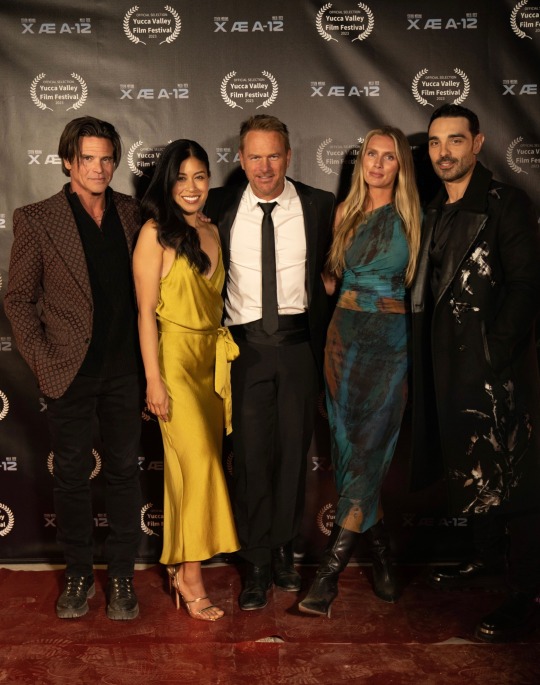

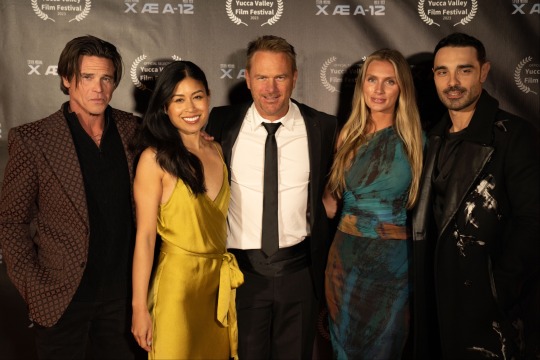
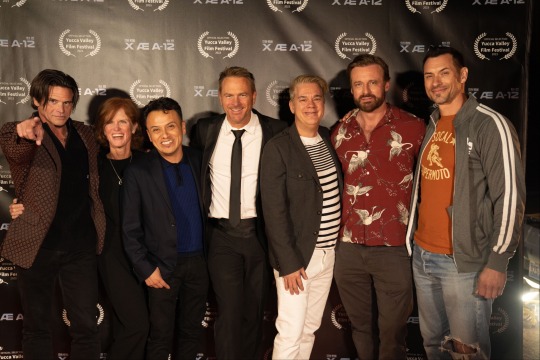
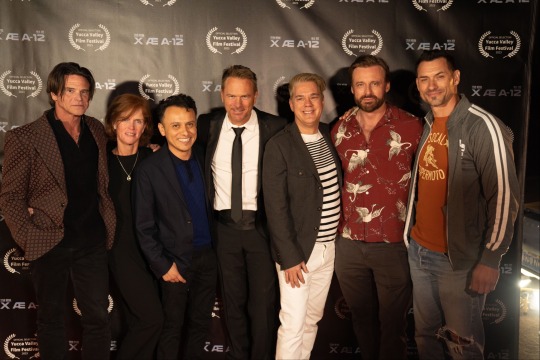
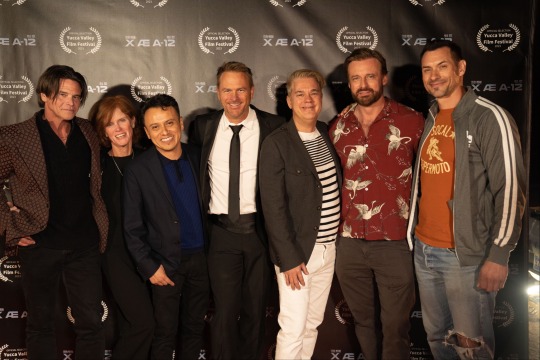
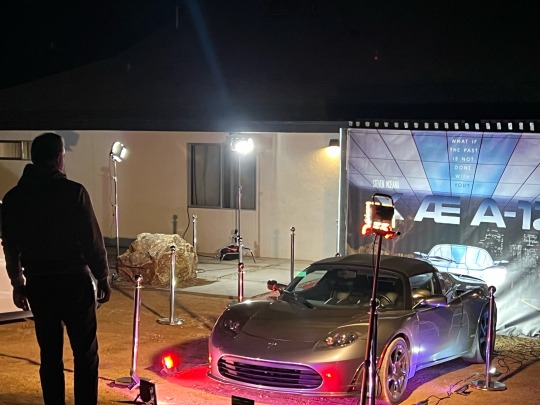
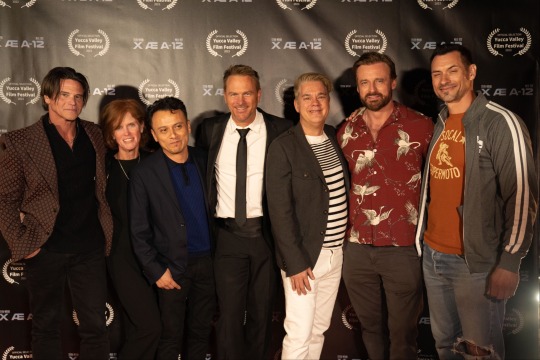
#xaea12movie#yucca valley film festival#desert doghouse#red carpet#Kim sandefur#Chris Collins#Steven Morana#Leo Terry#callum blue#terrell sandefur#joshua tree#film festivals
0 notes
Text
We WON!
“X AE A-12” won the biggest award of the night: the Yucca Valley Award! Thank you to the Yucca Valley Film Festival for this wonderful opportunity. And ultimately, a big thank you to the cast & crew who worked to bring this film into existence. 🙏🏼



#XAEA12movie#yucca valley film festival#indie films#filmmaker#short films#film festival#chris collins#steven Morana#terrell sandefur
0 notes
Text
Yucca Valley Film Festival with Rosanna Arquette. My short film “X AE A12” was the first to screen in the shorts block.
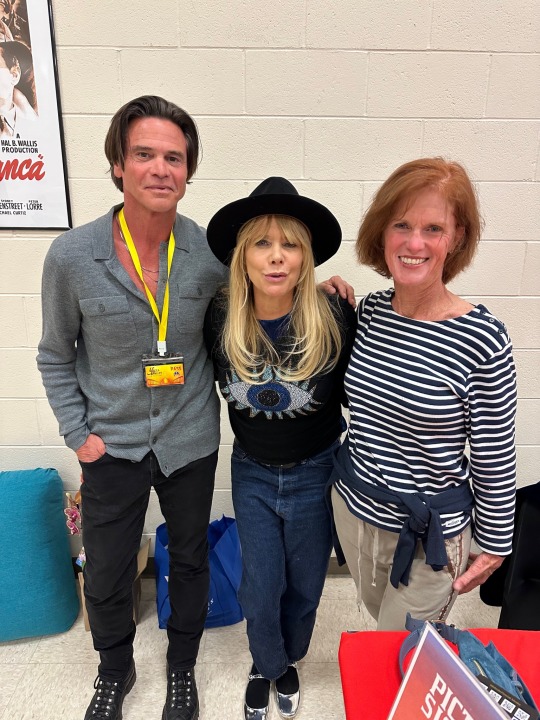


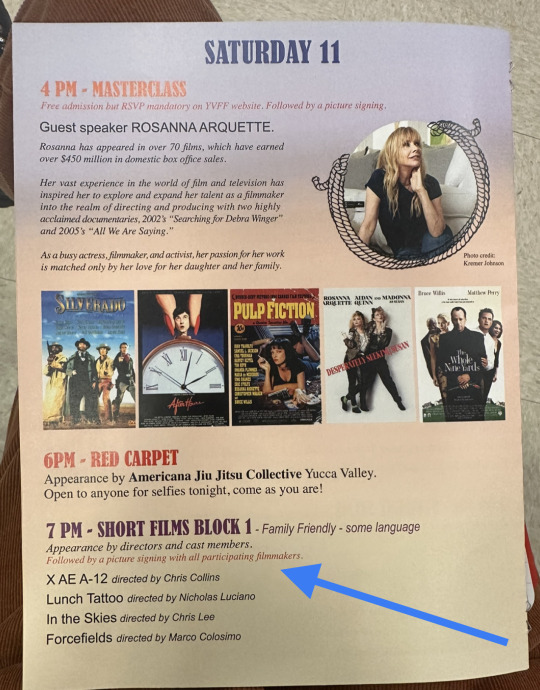
#yucca valley film festival#rosanna arquette#X AE A12#indie film#film festivals#terrell sandefur#kim sandefur#yucca valley#Matt beurois
1 note
·
View note